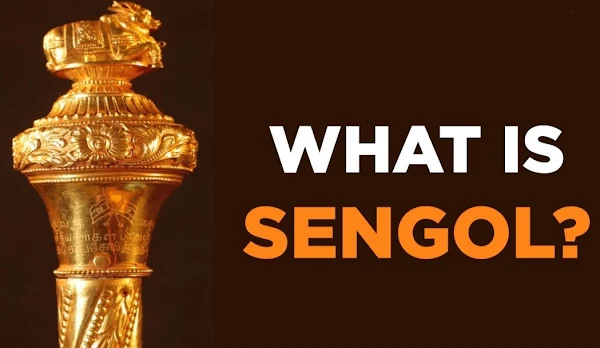Sengol is a gold sceptre, installed in India's new Parliament House in 2023. This Sengol was handed over to the first prime minister of the Republic of India, Jawaharlal Nehru, in 1947 by two sannyasis from Sri Amblavana Desigar in Thanjavur, who believed it apt that the first head of the new government of Free India be presented with a symbol of power and authority. Though Sengol is a generic term for sceptre in Tamil, the term got wider national attention after the Government of India decided to install the 1947 sceptre in the New Parliament House. On 28 May 2023, during the inauguration of the New Parliament House, Prime Minister Narendra Modi installed the sengol near the chair of the Speaker of the Lok Sabha.

A solemn and sacred Tamil tradition of Sengol (Dharma Danda) vesting ceremony accompanied by a recital of 11 verses from the Theveram text invoking the blessings of Shiva for the ruler took place on August 14, 1947, symbolising the transfer of power from British Viceroy Lord Mountbatten to Indian Prime Minister Pandit Nehru. It happened just before Pundit Nehru hoisted the national flag and addressed the nation at midnight.
Vesting the Sengol in the hands of the new ruler by Rajaguru is the Tamil Chola Empire tradition of anointing a new ruler. An ancient Tamil Shaiva Adheenam (Math) performed the ceremony and vested the Sengol in the hands of Pundit Nehru. The Sengol - which symbolises virtual and ethical rule – is highly spoken of in the ancient Tamil texts, and saint-poet Tiruvalluvar has written 10 verses celebrating Sengol and "Songonmai" – which means rule based on "Aram" – the Tamil world for Dharma.
Vesting the Sengol in the hands of the new ruler by Rajaguru is the Tamil Chola Empire tradition of anointing a new ruler. An ancient Tamil Shaiva Adheenam (Math) performed the ceremony and vested the Sengol in the hands of Pundit Nehru. The Sengol - which symbolises virtual and ethical rule – is highly spoken of in the ancient Tamil texts, and saint-poet Tiruvalluvar has written 10 verses celebrating Sengol and "Songonmai" – which means rule based on "Aram" – the Tamil world for Dharma.
No comments:
Post a Comment